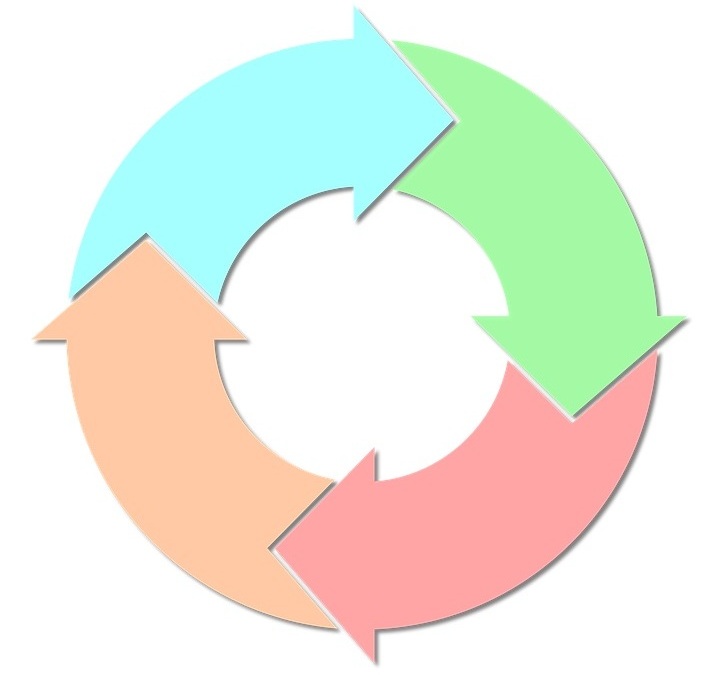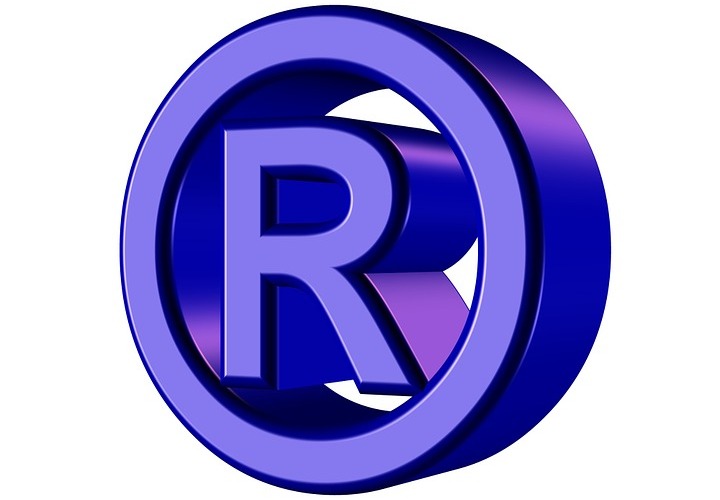A trademark, copyright, and patent are perhaps one of the most important assets to your business. They represent the different types of intellectual property (IP). If you are a business owner, you need to get familiar with them.
When most people think of the term “property” the first thing that comes to mind is a tangible asset – usually real estate. Intellectual property is slightly different but just as important an asset like any other.
IP law centers on the protection of your hard-earned ideas and creations from unfair and often malicious competition in the business landscape. Take a deep dive into the world of intellectual property and see why it is crucial for your business.
Of Unicorn Frappuccinos
For the average American, no morning is considered complete without a daily caffeine fix. That’s why you’ll always find numerous people flocking to their local Starbucks to grab a cup of coffee on-the-go.
This little story, however, is not about their profound love for morning lattes. It’s about blue and pink Unicorn Lattes, specifically, the trademark infringement lawsuit that a modest coffee shop in New York slapped Starbucks Corp with.
Here’s where the bone of contention was. Montauk Juice Factory, the New York-based coffee shop, painstakingly crafted the highly-Instagrammable “Unicorn Latte”. This drink’s predominant colors were bright blue and pink. Four months later, the folks at Starbucks launched their version of the blue and pink drink with similar design accents and christened it the “Unicorn Frappuccino”.
They had no idea that there was a similar drink with the same name and design out there. According to them, this was purely coincidental! Talk about having telepathic abilities. But, thats a discussion to be had at a different date.
The point is, Montauk Juice Factory had trademarked the now-famous lookalike drink. The goal of their suit was to bar Starbucks from using the “Unicorn Latte” trademark and to seek monetary damages in connection with all losses they incurred as a result of the alleged infringement. This is a perfect example of why your business needs to take IP issues seriously.
Why Is Intellectual Property Important
Most entrepreneurs are completely oblivious to how many aspects of their business they can protect. You can protect its name, its logo, designs or any creative works you conceive.
It only makes sense. After all, why would you want another company profiting from your hard work? If you want to establish your business’ presence in the marketplace, protecting its IP could spell the difference between its success and failure. If you don’t, some other company could creep up from the woodwork and steal your company’s identity.
If that were to happen, there’s not much you’ll be able to do about it, especially if they get the IP rights to it just when you started riding the wave of success. IP plays an integral role in the longevity of any business. You need to get familiar with patent, trademark and copyright law. Here’s why you need to make IP a priority.
1. You Get to Keep Your Ideas
Having a great idea is one thing. But, how can you prove that it was yours in the first place to prevent someone else from cashing in on your brilliance? In the cut-throat world of business, everyone’s looking to be bigger, better, unique and more efficient than ever to stand out from the crowd.

For this reason, there are always people out there who want to duplicate your success. After all, why reinvent the wheel when they can simply steal your idea and sell it as their own? If you want to prevent your competitors from profiting from your work without your consent you need to protect your brilliant ideas at all costs. Protecting your company’s trademark symbol would be a great starting point.
2. It’s Critical for Your Business’ Growth
Everyone loves the underdog and in most films, they always emerge on top. In the real world, however, underdogs get crushed under the heels of the much larger more established bears.
There’s nothing harder for a small business starting than getting a slice of the market share pie. The larger more dominant companies in play are normally unwilling to let go of even a small sliver of it.

More often than not, when a competitor perceives your emerging business as a threat, perhaps because of some unique product you have to offer that the existing market is taking a liking to, they are more likely to steal your idea from right under your nose without you even realizing it.
This will stop the growth of your business dead in its tracks, making it difficult to recover. The only way to mitigate this eventuality is by making sure that no one else is using your intellectual assets.
3. It’s Not as Hard as You Think

Many small business owners have this preconceived notion that IP is a tedious, complex, daunting and time-consuming process. While this may very well be true, getting a copyright, trademark or patent lawyer on board to help you with the process is a much easier alternative.
They’re well versed in the area having handled hundreds of requests for IP protection from numerous clients. While you may not be able to protect an idea itself, you can protect the fruits of its actualization.
Types of IP Protection for Your Business
Copyright vs patent. Trademark vs copyright. What’s the difference? Well, they are all different types of IP protection you can get to safeguard your business’ intellectual assets. Here’s how they are different.
1. Trademarks
Trademark definition: A trademark is a symbol, design, phrase or word that differentiates the source of a business’ products from that of its competitors. Some famous trademarks include Nike, Apple, Coca-Cola, and Pepsi.

How to Trademark a Name
Trademark registration enables you to promote your brand with the knowledge and confidence that your business is protected by the full force of federal law. Here are some qualifications you need to meet before you can begin the trademark application process.
First, you need to ensure that the product or service you are offering affects interstate commerce. For instance, you can trademark the name of your motel since it serves customers coming from different states even though it is located in one specific state.
If you run an online business, you can trademark its name. It qualifies as interstate commerce since your product or service can be purchased by customers who are in multiple states across the country.
Second, the trademark you choose cannot be the same as or too similar to that of an existing commodity. Remember, the whole point of IP protection is to set your business apart from the competition and not to confuse customers.
So, you’ll need to search for all the existing trademarks on the US Patent and Trademark Office (USPTO) website and any other resources you may have access to. A trademark lawyer can do this for you.
Third, whatever it is you want to trademark should not be prohibited, generic or overly descriptive. For instance, you can’t trademark the name “mattress” since it qualifies as being generic. It’s not a name that describes who manufactures the product but rather the product itself. It is not considered distinctive enough to qualify for IP protection.
Finally, you can’t register a trademark that contains the US flag, government insignias or names, phrases, designs or symbols that falsely suggest a connection with national symbols, institutions or persons (whether living or dead). It also cannot be immoral or deceptive in any manner.
Trademark Application Process
Once you confirm that your trademark qualifies for registration, here’s how the process works:
- Go to the USPTO website and use the TEAS (Trademark Electronic Application System) to submit details of your application.
- Depending on how detailed the information about your trademark is, it could cost either $275 or $325.
- You can also apply via mail for $375.
- Provide your name and address and a clear drawing of the mark. Also, provide a comprehensive list of the commodities on which the mark will be used.
- Pay a filing fee for at least one class of the commodities.
- The USPTO attorneys will then review each application before communicating with you regarding the status of the application.
- If it passes all their scrutiny levels, your trademark will be published as a candidate for registration. This gives a chance to existing trademark owners to object to the registration and cite the reasons why.
- Once your trademark is federally registered you will receive a notice so that you can go ahead and file an “Affidavit of Use”. This has to be renewed every 10 years.
2. Copyright
Copyright definition: It is a form of IP protection that gives a person exclusive rights to publish, sell or reproduce their original works of authorship. Copyright registration seeks to protect the time, effort and creativity of an author in crafting and developing their works. All their works should bear the copyright symbol that has the year of first publication, as well as, an identification of the copyright owner.

How to Copyright
The copyright registration process has three fundamental elements:
- The application form
- The filing fee (non-refundable)
- A copy of the authored works (non-returnable)
Here’s how to get a copyright registration:
- Reduce your authored works into a tangible form. This includes recording a song or writing a publication.
- Visit the US Copyright Office website.
- Complete Form CO online. It should contain details on the type of work, details of the publication and year of completion.
- Provide details on the author’s full name and contact details. The author’s year of birth and death also has to be provided if the copyright claimant is not the author.
- Submit the completed form as well as a digital copy of the work at a fee of $35 to the US Copyright Office.
Get a competent copyright lawyer to do this for you to ensure that you don’t infringe on someone else’s IP.
3. Patent
What is a patent and how is it different from copyrights and trademarks?
Patent definition: An exclusive right that is granted to an inventor that allows them to exclude third parties from creating, selling or utilizing the invention for a stipulated period. The system is designed to encourage innovators to come up with unique and useful inventions that are beneficial to society at large.

There are generally three categories of patents:
- Utility patents – These are granted to new processes, chemicals, and machines.
- Design patents – These are granted to protect the unique appearance or design of manufactured objects.
- Plant patents – These are granted for the asexual reproduction or invention of new plant varieties and hybrids.
How to Patent an Idea
Not all inventions qualify for patenting. They need to be novel in the sense that they are different from all other existing inventions in multiple aspects. They also need to be “non-obvious” meaning that a skilled expert in the field would regard the invention as both a surprising and unexpected development.
It’s important to note that an individual can’t patent a mere idea. They have to come up with a solid method of implementing the idea to bring it to fruition. Likewise, you also can’t patent an invention that is intended for illegal use.
Here’s an overview of the patent application process.
- Record every step involved in the invention of your product. Draw and describe every aspect of it, as well as, all modifications done.
- Ensure that your invention qualifies for a patent.
- Assess the commercial viability of your invention.
- Visit a Patent and Trademark Depository Library and search for earlier patents that might be similar to yours to offset any possibility of patent infringement. If you find some, you’ll have to show how yours is an improvement on these earlier innovations.
- File for a provisional or regular patent application with the USPTO. You can do it electronically at a fee of between $65 and $260 depending on the size of your business entity.
- Wait to hear back from the patent examiners once they review your patent.
Protect Your Dreams
Intellectual property law is complex. While you can very well do the trademark, copyright and patent application process yourself, there’s a good chance that you may fail to properly register some aspect of it. This omission could ultimately cost you your dreams.
Don’t leave anything to chance. Get an IP lawyer to do it for you.
If you have more legal questions, you can also chat online with a Laws101.com attorney where you’ll be instantly connected to a lawyer who can give you legal guidance on your specific case or question.
